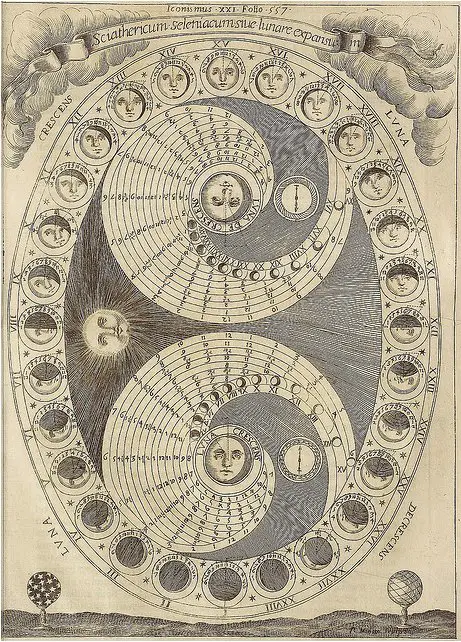di Marco Maculotti
cover: phases of the moon, taken from "Ars Magna Lucis et Umbrae" by Athanasius Kircher, 1646
In the first essay of this column on the theme of the symbolism of the spiral and the "cosmic rebirth" [cf. The symbolism of the Spiral: the Milky Way, the shell, the "rebirth"] we dwelt on the esoteric meanings of the spiral symbol and the closely related ones of the Milky Way and the shell. In this second appointment we aim to analyze the symbol of the double spiral from an even more 'cosmic' perspective, with regard to the traditions that convey this symbol to concepts concerning the creation (or rather, the emanation) of the cosmos and its reabsorption. We will begin our discourse by examining the Indian Brahmin tradition and comparing it with the Tantric śivaist one of Kashmir, and then analyzing the points of contact, from a religious syncretism point of view, with that — distant in terms of time and space — pre-Columbian of the Nahua-Aztec peoples.


